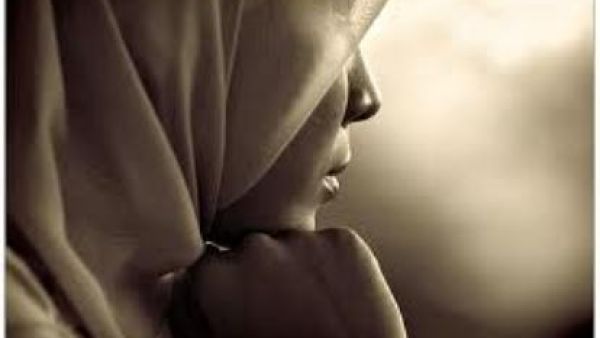In Lebanon’s conservative Islamic villages, a large number of girls don the hijab at the age of nine. This practice, however, does not always stay with them for life.
Walking around a neighborhood or village with a Muslim majority, you might see a girl or young woman wearing a fashionable hijab. Another could be wearing something prescribed by Sharia.
One woman might be in tightly fitting clothes and another in loose garments, and so on. They are all different but their headdress is the same.
But Ruba (30 years old) cannot bear the idea of the fashionable hijab, worn with tight jeans and makeup. She believes it shows a lack of respect for the Islamic hijab.
A sensible opinion perhaps, but strange coming from a woman who has decided to abandon the hijab after many years of donning it.
Ruba rejects this logic, because “when I wore the hijab, I used to respect its requirements. Even though I was never convinced by it or liked it, I did not distort it.”
Ruba wore her hijab from a young age because her religious home environment and surroundings pressured her to do so. However, she points out that this did not happen by force.
“It was quite the opposite. I wanted to wear it. At the age of nine, a girl thinks that if she wears the hijab, it means that she has matured and become an adult,” she explains.
Fifteen years passed where Ruba grudgingly wore it. So what led to her making the decision not to wear it after all that time?
“My father died,” she says before quickly explaining, “God forbid, I never wanted him to die, but this was the main reason I carried on wearing the hijab all those years.”
Her father used to get very angry because he believed that removing the hijab meant that one was abandoning the religion, but Ruba disputes this.
Ruba’s family tried to persuade her to keep wearing the hijab, saying she could even make it “fashionable.”
I still pray and fast and adhere to all the other observances, but I am not convinced of the reasoning that girls are a temptation and this is why they have to wear the hijab.They gave her many choices, including “clothes, colors, and accessories, on condition that I do not show my hair. But I chose to become unveiled and to be more reconciled with my outward appearance.”
She concludes by saying, “As time passed, everything went back to normal when they understood that nothing [fundamental] had changed.”
Jinan Salim (21 years) felt the same joy when she first wore the hijab. But after a few years, she felt she was doing herself wrong.
“I do not understand how it can be imposed on girls of that age, because they are definitely not temptuous. In fact they can barely understand why they have to wear it,” she says.
Jinan sees this as simply a way of undermining girls so that they get used to wearing it, not so that they are convinced that they should. This is all because of the male chauvinist restrictions imposed by force on women in our society, she says.
Jinan took off her hijab at 20, after she had formed a different understanding of the world than the religious one she had grown up with.
“My external appearance was in one corner and my ideas and convictions on the opposite. I lived a disconnection that was fed by people’s behavior toward me,” she says.
Jinan could not bear the contradiction between her appearance and her beliefs. Her outer appearance made people place her in a category she did not feel she belonged to.
When she got tired of this double life, she decided to adopt a gradual tactic. “I stopped wearing loose clothing and began to wear tight fitting short clothes. I allowed a strand of my hair to fall on my forehead, signaling that I did not mind if it showed.”
But this approach complicated matters, because some continued to consider her a hijab-wearing girl, while others thought the opposite.
For Jinan, however, the hijab was just a piece of cloth she wore as a disguise every day. When it got to decision time, the same objections from her family were voiced as in Ruba’s case.
Jinan’s hair, with its golden strands falling on her shoulders, is conclusive proof that she did not take her parents’ advice. They accepted her choice, but only after realizing there was nothing they could do about it.
My family tried to persuade me not to do it, not for the sake of religion, but just to avoid people’s gossip...Not every girl who is used to wearing the hijab from a young age dares to remove it suddenly like Ruba and Jinan. Some try to conceal it from their families for fear of a negative reaction.
Fatima H. (28 years old) found that she could let her hair down, so to speak, when she went to Beirut.
“I was a prisoner of the village and its customs until I found a job that forced me to move to Beirut for five days a week,” she says.
Moving away from her family and village, she found herself in a different atmosphere where she made new friends. They were the first to encourage her to remove the hijab, although she had was already open to the idea.
Fatima does not deny that she had spoken to her parents about removing the hijab in the past, but the answer was always total refusal. She says that she was never convinced of the need to wear the hijab or even of the reason for doing so.
In her opinion, “we wear it from the time we are children and it becomes an essential part of our clothes, nothing more and nothing less.”
“Girls who wear the hijab as they get older are the only ones that can be called convinced or committed, but the nine year olds are under the influence of tradition, anesthetized by customs,” she says.
What is interesting about Fatima is that she has two identities. “Tima” who has black hair during the week, and Fatima who wears an embroidered headscarf at the weekend, when she visits her family.
She even has two Facebook accounts, one with a hijab, where she links up with her family and school friends. The other is under the name “Tima” where she is careful not to show her face clearly. Her friends there are colleagues from work and people has she has met in Beirut.
Three years after she removed her hijab, she is still hesitant to tell her parents.
She remains fearful when she walks around Beirut. “I almost have a heart attack when I think someone is on the other side of the street...So far I have been fortunate because all my relatives live in rural areas,” she explains.
But what if she gets unlucky some day? She suppresses her fear and replies, “They will find out in the end...Until then, may God shelter me.”
Sheikh Hussein Abdullah, from the legal office of the late religious authority Mohammed Hussein Fadlallah, blames the parents and holds them responsible in the first degree.
He thinks parents should “establish the meaning of the hijab in their daughters’ minds from a young age, not to portray it as a prison and isolate the girl from society.”
He adds, “wearing the hijab should be accompanied with a well-rooted religious education over many years. During these years, the girl will become convinced of its necessity and its moral and humanitarian aim, as well as it being the crown of other religious practices.”
Abdullah is sorry that the concept of the hijab is “now understood to be a head cover, accompanied by behavior that does not reflect its sanctity.” He hopes that education on the subject will become deeper and more positive.
Ruba, Jinan, and Fatima are three women who agreed to speak about their experience but many refused. Some take off the hijab publicly and others privately.
What unites them is that they have rejected the custom but it does not necessarily mean that they have abandoned their religion.
It is more of a protest against a conformity imposed by family and the general environment. But for some, the hijab is something that might stay with them all their lives, whether they like it or not.
Many Reasons
Talal Atrisi, a professor of educational sociology and social psychology at the Lebanese University, offers several reasons why a young woman might want to remove her hijab after wearing it for years.
The first reason is “the excessive strictness about forbidden things from a young age and the intolerance of any behavior that is contrary to the hijab, creating a feeling among the girls that the hijab is a prison or a chain, and nothing more.”
The second reason has to do with “the environment where a girl finds herself that contributes enormously to changing a person’s point of view.”
More important than all of this “is the huge role of the media in encouraging the abandonment of the hijab.”
“There is an ongoing media offensive portraying the hijab as a way of restricting a woman’s freedom and showing that the world can only accept the unveiled woman who is liberated by liberating her body,” he explains.
“Furthermore, the spread of fashionable religious clothes, does not leave girls with much choice. Those who do not abandon it, begin to wear it simply as a headscarf, and nothing more,” Atrisi continues.
Finally, “this turns it into a caricature, it fits in with the fashion, so it satisfies what the woman wants, and satisfies the parents whose only concern is that their daughter keeps the hijab on.”
By: Kawthar Fahs
Your space
Do you think the hijab or head scarf must be donned for life?
Is it a lifestyle perrogative for the wearer - is there room for personal choice when it comes to a religious diktat?
Share your stories!
If you have un-veiled at a later age, or decided newly to veil, tell us about your experience, and perhaps the judgement you faced.








